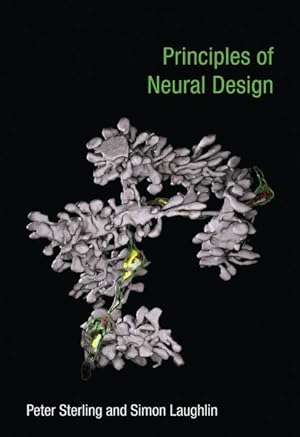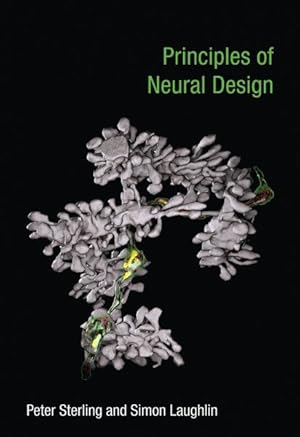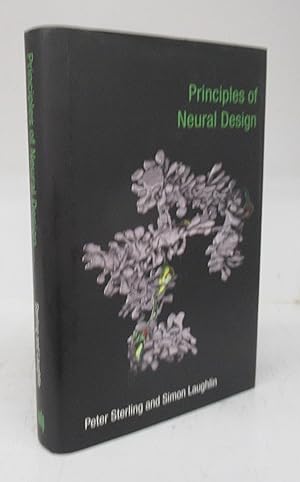principles neural design di sterling peter (18 risultati)
Filtri di ricerca
Tipo di articolo
- Tutti i tipi di prodotto
- Libri (18)
- Riviste e Giornali (Nessun altro risultato corrispondente a questo perfezionamento)
- Fumetti (Nessun altro risultato corrispondente a questo perfezionamento)
- Spartiti (Nessun altro risultato corrispondente a questo perfezionamento)
- Arte, Stampe e Poster (Nessun altro risultato corrispondente a questo perfezionamento)
- Fotografie (Nessun altro risultato corrispondente a questo perfezionamento)
- Mappe (Nessun altro risultato corrispondente a questo perfezionamento)
- Manoscritti e Collezionismo cartaceo (Nessun altro risultato corrispondente a questo perfezionamento)
Condizioni Maggiori informazioni
Legatura
Ulteriori caratteristiche
- Prima ed. (1)
- Copia autograf. (Nessun altro risultato corrispondente a questo perfezionamento)
- Sovracoperta (3)
- Con foto (10)
- Non Print on Demand (18)
Lingua (2)
Prezzo
- Qualsiasi prezzo
- Inferiore a EUR 20 (Nessun altro risultato corrispondente a questo perfezionamento)
- EUR 20 a EUR 45
- Superiore a EUR 45
Spedizione gratuita
Paese del venditore
Valutazione venditore
-
EUR 26,31
Convertire valutaGratis per la spedizione in U.S.A.Quantità: 1 disponibili
Aggiungi al carrelloCondizione: good. The book is in good condition with all pages and cover intact, including the dust jacket if originally issued. The spine may show light wear. Pages may contain some notes or highlighting, and there might be a "From the library of" label. Boxed set packaging, shrink wrap, or included media like CDs may be missing.
-
EUR 27,43
Convertire valutaEUR 4,03 per la spedizione in U.S.A.Quantità: 1 disponibili
Aggiungi al carrellopaperback. Condizione: Very Good. Reprint. Used - Very Good.
-
EUR 30,96
Convertire valutaEUR 4,94 per la spedizione in U.S.A.Quantità: 1 disponibili
Aggiungi al carrellohardcover. Condizione: Very Good. Name on ffep; else tight and clean.
-
EUR 35,35
Convertire valutaEUR 3,43 per la spedizione in U.S.A.Quantità: 3 disponibili
Aggiungi al carrelloCondizione: New. pp. 568.
-
EUR 42,35
Convertire valutaEUR 2,27 per la spedizione in U.S.A.Quantità: Più di 20 disponibili
Aggiungi al carrelloCondizione: New.
-
EUR 44,70
Convertire valutaGratis per la spedizione in U.S.A.Quantità: Più di 20 disponibili
Aggiungi al carrelloCondizione: New. Brand New.
-
EUR 47,57
Convertire valutaEUR 2,27 per la spedizione in U.S.A.Quantità: Più di 20 disponibili
Aggiungi al carrelloCondizione: As New. Unread book in perfect condition.
-
EUR 45,26
Convertire valutaEUR 9,95 per la spedizione da Germania a U.S.A.Quantità: 3 disponibili
Aggiungi al carrelloCondizione: New. pp. 568.
-
EUR 56,99
Convertire valutaGratis per la spedizione in U.S.A.Quantità: Più di 20 disponibili
Aggiungi al carrelloPaperback. Condizione: New.
-
EUR 52,85
Convertire valutaEUR 7,48 per la spedizione da Regno Unito a U.S.A.Quantità: 1 disponibili
Aggiungi al carrelloCondizione: New. pp. 568.
-
EUR 66,34
Convertire valutaEUR 5,58 per la spedizione in U.S.A.Quantità: 1 disponibili
Aggiungi al carrelloHard cover. Condizione: Very good. Condizione sovraccoperta: Good. In great condition. Binding is tight and inside is clean and unmarked.
-
EUR 54,68
Convertire valutaEUR 17,27 per la spedizione da Regno Unito a U.S.A.Quantità: Più di 20 disponibili
Aggiungi al carrelloCondizione: As New. Unread book in perfect condition.
-
EUR 56,15
Convertire valutaEUR 17,27 per la spedizione da Regno Unito a U.S.A.Quantità: Più di 20 disponibili
Aggiungi al carrelloCondizione: New.
-
EUR 49,88
Convertire valutaEUR 24,95 per la spedizione da Paesi Bassi a U.S.A.Quantità: 1 disponibili
Aggiungi al carrelloCondizione: Very good.
-
Principles of Neural Design
Da: Attic Books (ABAC, ILAB), London, ON, Canada
EUR 88,45
Convertire valutaEUR 12,88 per la spedizione da Canada a U.S.A.Quantità: 1 disponibili
Aggiungi al carrelloHardcover. Condizione: Fair. Condizione sovraccoperta: Fine. xxiii, 542 p. 24 cm. B&w illustrations. Black hardcover in dustjacket. Ink underlining and marginalia throughout.
-
EUR 59,21
Convertire valutaEUR 42,94 per la spedizione in U.S.A.Quantità: Più di 20 disponibili
Aggiungi al carrelloPaperback. Condizione: New.
-
EUR 58,45
Convertire valutaEUR 74,82 per la spedizione da Regno Unito a U.S.A.Quantità: Più di 20 disponibili
Aggiungi al carrelloPaperback. Condizione: New.
-
Principles of Neural Design
Editore: The MIT Press, Cambridge, Massachusetts, 2015
Da: BIBLIOPE by Calvello Books, Oakland, CA, U.S.A.
Prima edizione
EUR 394,50
Convertire valutaEUR 4,29 per la spedizione in U.S.A.Quantità: 1 disponibili
Aggiungi al carrelloHardcover. Condizione: Near Fine(-). Large octavo in black, color illus jacket; xxiii, 542 pages: illustrations; 24 cm. Scarec in hardcaover. "Neuroscience research has exploded, with more than fifty thousand neuroscientists applying increasingly advanced methods. A mountain of new facts and mechanisms has emerged. And yet a principled framework to organize this knowledge has been missing. In this book, Peter Sterling and Simon Laughlin, two leading neuroscientists, strive to fill this gap, outlining a set of organizing principles to explain the whys of neural design that allow the brain to compute so efficiently. Setting out to "reverse engineer" the brain--disassembling it to understand it--Sterling and Laughlin first consider why an animal should need a brain, tracing computational abilities from bacterium to protozoan to worm. They examine bigger brains and the advantages of "anticipatory regulation"; identify constraints on neural design and the need to "nanofy"; and demonstrate the routes to efficiency in an integrated molecular system, phototransduction. They show that the principles of neural design at finer scales and lower levels apply at larger scales and higher levels; describe neural wiring efficiency; and discuss learning as a principle of biological design that includes "save only what is needed." Sterling and Laughlin avoid speculation about how the brain might work and endeavor to make sense of what is already known. Their distinctive contribution is to gather a coherent set of basic rules and exemplify them across spatial and functional scales."--Publisher's descriptionContents: What engineers know about design. Why an animal needs a brain. Why a bigger brain? How bigger brains are organized. Information processing: from molecules to molecular circuits. Information processing in protein circuits. Design of neurons. How photoreceptors optimize the capture of visual information. The fly lamina: an efficient interface for high-speed vision. Design of neural circuits: recoding analogue signals to pulsatile. Principles of retinal design. Beyond the retina: pathways to perception and action. Principles of efficient wiring. Learning as design/design of learning. About near fine in near fine(-) jacket. Now in archival mylar. Shows very minor signs of exrternal wear. Biinding tight; pages free of markings. First ed., first printing (full number line).













